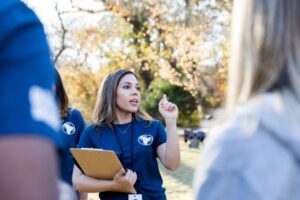Modules for growth controllers to autonomously regulate co culture composition
The possibilities of engineered cell-based systems have been expanded by metabolic engineering and synthetic biology. However, the co cult addition of regulatory and biosynthetic components that are not native to the cells can cause them to be overburdened. Engineering consortia is a new area of interest that allows cell subpopulations to work together to perform a desired function. This prevents metabolic overload. This strategy involves regulation of cell populations. We have created a synthetic co culture controller that consists of growth-controller and cell-based signal translator modules. This allows for autonomous regulation of consortia composition. To allow cross-talk between strains, the system uses an orthogonal autoinducer AI-1 cell-cell signaling mechanism of bacterial QS (bacterial quorum sensing) and an AI-2 signal-controlled growth rate regulator to regulate relative population densities. A simple frutta bowls mathematical model is also developed that allows cell and system design to autonomously control population trajectories.
The potential for engineered cell-based systems has been expanded by advances in metabolic engineering and synthetic biology 1,2. Engineered microbes allow for the production of environmentally-friendly molecular products. Also, smart bacteria have appeared that sense their environments and execute desired functions such as the synthesis and delivery of therapeutics 1,5,6,7,8. However, it is well known that engineering cells to perform multiple functions or create products via many interconnected pathways can lead to new challenges. These include cell bottlenecks, inefficient utilization of cell resources, and an increased metabolic burden on individual cells. An tom celebs go dating emerging area of focus has been on the use of cell co-cultures or small consortia wherein individual populations work together to accomplish a desired output in cooperation with the rest of the consortia 9,10,11,12,13,14,15. Multi-cell systems offer many advantages over traditional clonal population models, including the possibility of division of labor, reduced metabolic burden on individual strains and ability to specialize and optimize, as well as options for plug and play 9,10,11. Although co cultures are promising, they require regulation of both gene transcription and each cell population within each consortia.
There have been very few studies that focus on developing devices or systems to regulate subpopulations within consortia. Multi-cell population studies, which are often used to produce biofuels and chemicals, typically rely co cult on specific inoculation rates or other manual strategies to maximize the proportion of each population 16-17,18. Alternatively, microfluidic and other devices can modulate the relative contributions of subpopulations by providing means to sequester or retain one population relative to another (e.g., using immobilization strategies) or by fluidically, but not physically, connecting populations (e.g., via porous membranes or 3D-printed microenvironments19). Reengineering native cell-cell signaling systems to allow for autonomous coordination of subpopulations is a more powerful and effective approach that doesn’t rely on equipment. We and others have previously exploited quorum sensing (QS), a bacterial form of cell-cell communication, to engineer communication circuits amongst and between bacterial strains to coordinate behaviors 20,21,22,23,24 or enable density dependent activation of desired behavior 25,26. Signals and QS circuits have been used to alter cell densities, such as activating production of toxic genes or toxins, to program monoculture stationary phase cell density27, and to create co cultures with defined behavior28-29. Similar strategies were used to create co cultures that allow for a variety of social interactions30.
We present a platform that allows for the autonomous and targeted regulation (Fig. 1a. AI-2, a universal QS signal that is produced by all species of bacteria31-32, is widely used to indicate cell density. It is also likely an important signal in natural consortia and microbiomes33. Our synthetic system can be modulated using an important signal that is often found in bacterial environments, AI-2. This signal cannot be easily measured online by users either in fermentation reactions, or in natural co cult consortia. This is achieved by rewiring the bacterial QS systems to control interspecies signaling. We present a signaling system and control system that allows for trans-species communication as well as growth rate control. The synthetic co culture is composed of an E.coli translator strain, which senses AI-2 and converts it into an orthogonal QS sign (AI-1). The output of this translator strain mediates the growth rate for the second strain. A second engineered E. coli control strain has a signal-mediated tunable rate. This is controlled by the level AI-1, a species-specific autoinducer signal. The translator population then produces AI-1 by sensing AI-2. This regulates the growth rate and composition of the artificial consortia that are based on the current AI-2 level.


